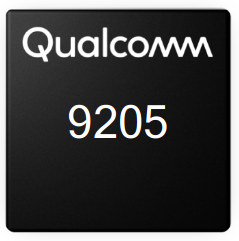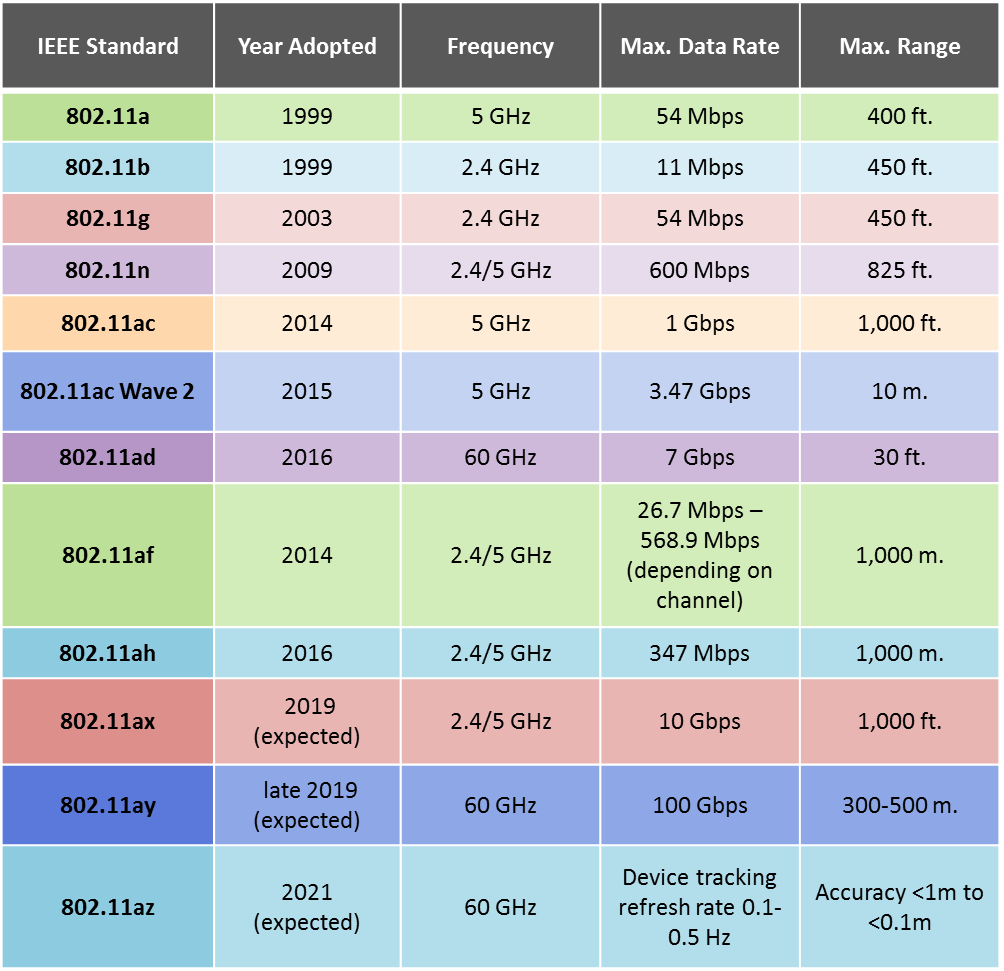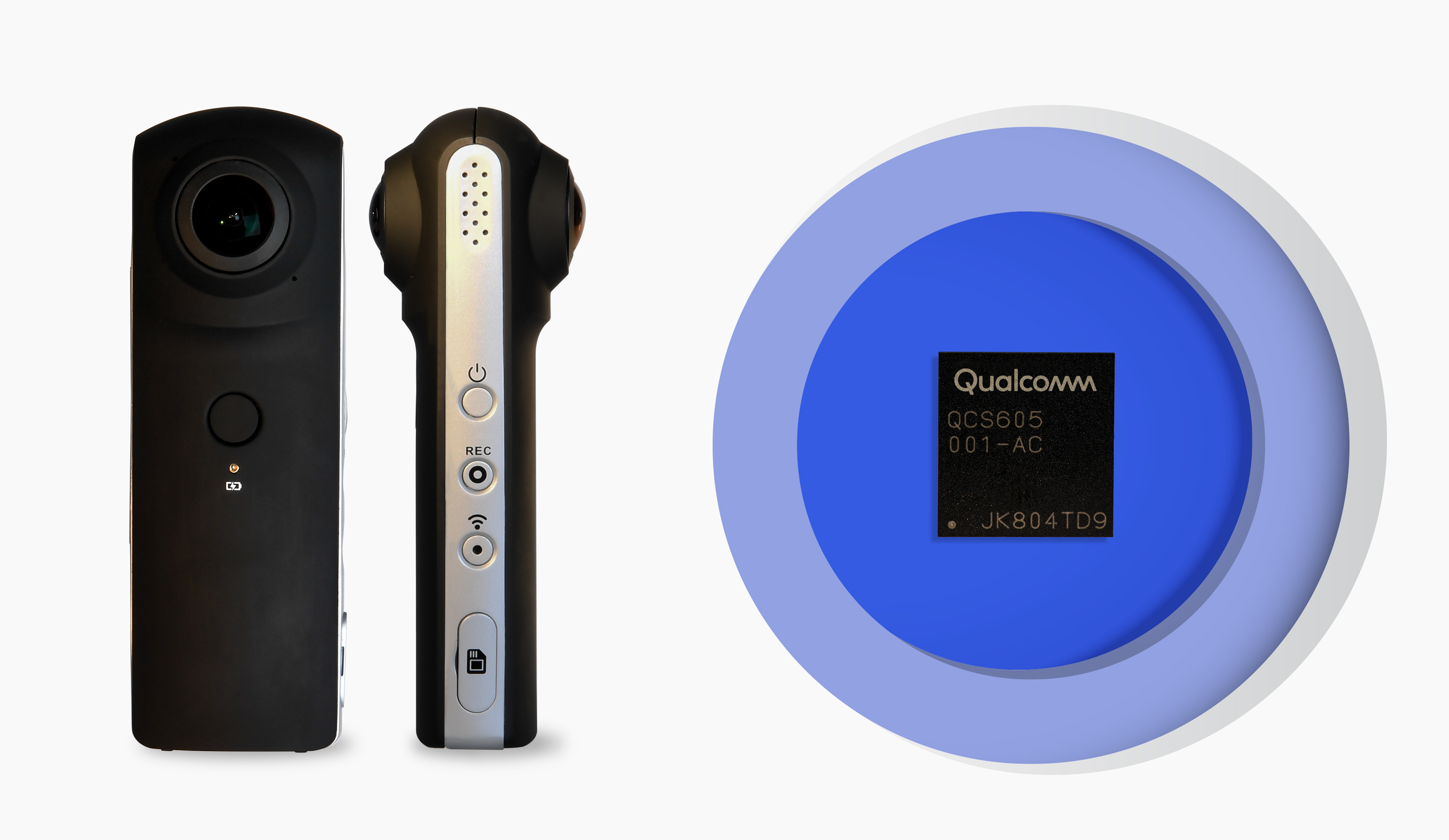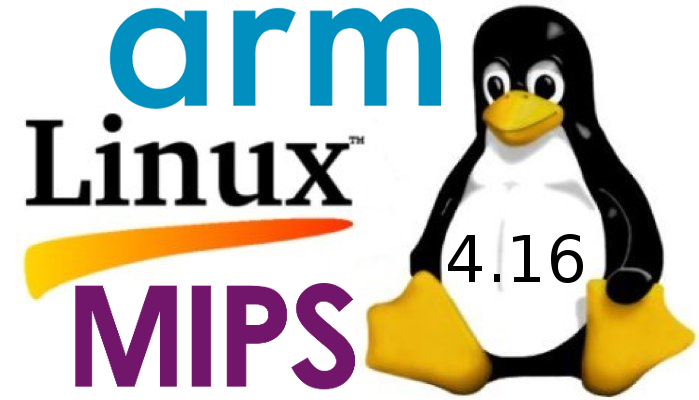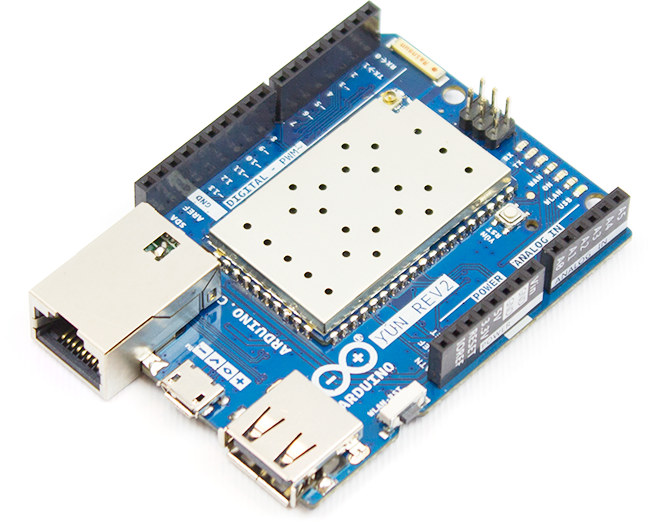Qualcomm has introduced a new LTE IoT chipset with Qualcomm 9205 LTE modem that supports Cat M1 (eMTC), NB2 (NB-IoT), 2G/E-GPRS fallback, as well as GNSS. Qualcomm 9205 comes at a lower price, smaller footprint, and up to 70% lower power consumption in standby mode compared to its predecessor (MDM9206). Qualcomm 9205 LTE modem key features and specifications: Processor / OS – Arm Cortex A7 up to 800MHz with support for ThreadX and AliOS Things real-time operating systems Connectivity Standards 3GPP release 14 Category M1 and NB2; 2G/E-GPRS fallback where Cat M1 / NB2 is not available. Category M1 mode supports voice for applications such as monitored security panels, and mobility for applications such as asset trackers. RF transceiver Bandwidth support from 450 MHz to 2100 MHz Built-in RF front-end, a first in the cellular IoT space Geolocation Integrated GNSS (Global Navigation Satellite Systems) support for GPS, Beidou, Glonass, and […]
Qualcomm QCA64x8 and QCA64x1 802.11ay WiFi Chipsets Deliver 10 Gbps Bandwidth
WiFi has evolved in recent years with the introduction of 802.11ad and 802.11ax (now called WiFi 6). THe latter is now official, and in the last year several 802.11ax chipsets and WiFi 6 routers have been announced, but I’ve not heard much about 802.11ad with claims of up to 7Gbps bandwidth at 60 GHz when unveiled in 2016. The latter have been supplanted by 802.11ay, with Qualcomm having just unveiled QCA64x8 and QCA64x1 802.11ay chipsets capable of delivering 10Gbps and operating at a frequency of 60 GHz. According to Wikipedia, 802.11ay is not really a new standard, but just an evolution of 802.11ad adding four times the bandwidth and up to 4 MIMO streams. Qualcomm chipsets will enable 10+ Gps speeds with wire-equivalent latency, while keeping the power consumption low, and bring the ability to play 4K UltraHD videos over WiFi, virtual / augmented reality games, fixed wireless mesh backhaul, […]
Qualcomm IPQ8078 based H3C WA6628 802.11ax WiFi Enterprise Router Supports up to 1000 Concurrent Clients
802.11ax WiFi aims to deliver aggregate throughput up to 10 Gbps, and better manage use cases with many users providing with up to 4 times average throughput per user compared to 802.11ac. We’ve already seen some ASUS 802.11ax routers, but if you ever have to organize an event with hundreds or thousands of users, or setup WiFi in crowded places like airports or train stations, Qualcomm IPQ8078 (datasheet) powered H3C WA6628 802.11ax enterprise router could be an interesting as the company claims its 12 stream channels can serve data to up to 1000 client devices simultaneously. The WA6628 routers comes with a 10G Ethernet port, built-in Bluetooth, and is said to improve wireless network transmission rates by at least three times compared to 802.11ac Wave 2 access points. Some of highlights of Qualcomm IPQ8078 SoC / WA6628 router include: 8×8 MU-MIMO doubles the number of devices which can be concurrently […]
Qualcomm QCS603/QCS605 “IoT” SoCs are Designed for AI and Computer Vision Applications
Qualcomm has unveiled the “Qualcomm Vision Intelligence Platform”, which aims at IoT devices with cameras leveraging artificial intelligence and computer vision. The first SoCs part of the platform are QCS605 and QCS603 manufactured with a 10nm process and equipped with an “advanced image signal processor” and the Qualcomm Artificial Intelligence (AI) Engine, as well Arm CPU cluster, Adreno GPU, and Hexagon DSP. QCS603 & QCS605 specifications: CPU QCS603 – 2x 1.6GHz Qualcomm Kryo 300 Gold cores, 2x 1.7GHz Qualcomm Kryo 300 Silver cores QCS605 – 2x 2.5GHz Qualcomm Kryo 300 Gold cores, 6x 1.7GHz Qualcomm Kryo 300 Silver cores Qualcomm Artificial Intelligence Engine DSP Qualcomm Hexagon 685 Vector Processor 2x Qualcomm Hexagon Vector eXtensions (HVX) GPU – Qualcomm Adreno 615 with OpenGL ES 3.2, Vulkan, OpenCL support Neural Processing – Qualcomm Snapdragon Neural Processing Engine programming interface with support for Tensorflow, Caffe/Caffe2, ONNE, Android NN; 2.1 TOPS @ 1w Memory […]
Linux 4.16 Release – Main Changes, Arm and MIPS Architectures
Linus Torvalds has just released Linux 4.16: So the take from final week of the 4.16 release looks a lot like rc7, in that about half of it is networking. If it wasn’t for that, it would all be very small and calm. We had a number of fixes and cleanups elsewhere, but none of it made me go “uhhuh, better let this soak for another week”. And davem didn’t think the networking was a reason to delay the release, so I’m not. End result: 4.16 is out, and the merge window for 4.17 is open and I’ll start doing pull requests tomorrow. Outside of networking, most of the last week was various arch fixlets (powerpc, arm, x86, arm64), some driver fixes (mainly scsi and rdma) and misc other noise (documentation, vm, perf). The appended shortlog gives an overview of the details (again, this is only the small stuff in […]
49 Euros Arduino Yún Rev.2 Unveiled with a Lower Profile, USB and Power Improvements
Arduino Yún board launched in 2013 was the first official Arduino combining Arduino and Linux thanks to respectively an Atmel ATMega32u4 microcontroller, and Atheros AR9331 MIPS WiFi SoC running Linino, a fork of OpenWrt maintained by Arduino. The company has now launched an upgraded version – simply called Arduino Yún Rev.2 – in order to to improve security, support, and open-sourceness of the board. Arduino Yun Rev.2 key specifications have actually not changed: MCU – Microchip ATMega32U4 @ 16 MHz (as used in Leonardo board) with 2.5KB SRAM, 32KB flash, 1KB EEPROM SoC – Atheros AR9331 MIPS-based Wi-Fi SoC coupled with 64MB external DDR2 and 16MB SPI NOR flash Storage – microSD card slot USB – micro USB connector + full USB 2.0 host port Connectivity – Ethernet + Wi-Fi I/Os 20 digital input/output pins (including 7x PWM outputs) 12x analog inputs But the hardware design – this time development […]
Qualcomm Unveils Mesh Networking WiFi Router / Gateway Reference Design Powered by IPQ40x8/9 NSoC
Qualcomm has just announced the Qualcomm Mesh Networking Platform for OEM and broadband providers to design home WiFi routers/gateways capable of providing “robust and consistent connectivity”, and feature voice control capabilities, centralized management and security, and a range of mesh system features. In order to speed up adoption the the platform, the company introduced the Qualcomm Mesh Networking Reference Design with the following key features & benefits: Network System-on-Chip (NSoC) – Qualcomm IPQ40x8/9 network system-on-chip with four Cortex A7 cores, 802.11ac WiFi 2×2+2×2, network and crypto accelerators Qualcomm Wi-Fi Self-Organizing (SON) feature suite will ensure corner-to-corner Wi-Fi coverage, easy set-up, automatic management and traffic optimization, as well as additional security safeguards. Carrier-Grade features with Wi-Fi SON APIs, cloud-based diagnostics Integrated voice capabilities thanks to built-in microphone array and speaker, voice recognition software, and APIs support for popular cloud-based assistant applications. Variety of backhaul options to be used to maximize the […]
LEDE 17.01.0 “Reboot” Router Operating System Released
LEDE (Linux Embedded Development Environment) is a fork of OpenWrt after some disagreements between developers, and while there are talks about merging OpenWrt and LEDE development, this is not done yet, and LEDE 17.01 has been released a few days ago. Some of notable LEDE 17.01 changes include: Linux kernel updated to version 4.4.50 (from 3.18 in Chaos Calmer) Update to dnsmasq 2.76, busybox 1.25.1, mbedtls 2.4.0, openssl 1.0.2k Improved Security Features Improved Networking Support Added new targets: apm821xx (AppliedMicro APM821xx) arc770 (Synopsys DesignWare ARC 770D) archs38 (Synopsys DesignWare ARC HS38) armvirt (QEMU ARM Virtual Machine) ipq806x (Qualcomm Atheros IPQ806X) layerscape (NXP Layerscape) zynq (Xilinx Zynq 7000 SoCs) Reorganized x86 target – Drop dedicated Xen DomU target, merged with x86/generic * Enable AES-NI support Build system improvements Image Builder / SDK – Rework library bundling to allow for better portability between different Linux distributions, added support for building kernel modules […]


